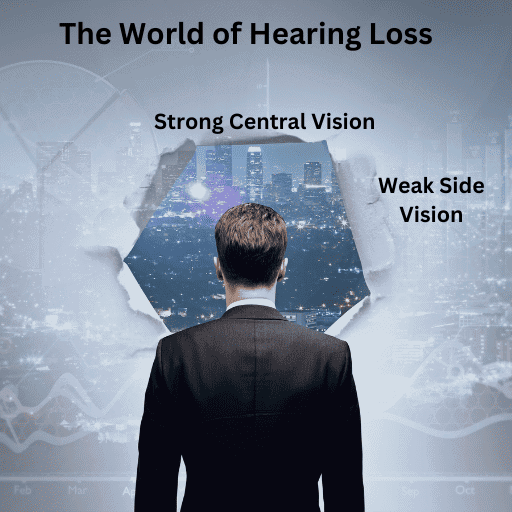Working with Cheri finally gave me the answer of why my now adult son continued to struggle to socialize and work at his level of intelligence. The answer still stuns me. It now makes sense that he felt depressed and upset. I believe that without Cheri’s advocacy help and our hard work, he would not have received this life changing help. When you read his story, I think you will be as stunned as me.
In March of 2018, my son was 21 years old. Together, we were starting yet another attempt to learn why he struggled to read and listen with comprehension and remember. Why was it so difficult for him to enjoy conversation, socialize. He had a long history of IEP’s with no real definitive diagnosis. Cheri suggested testing for Central Auditory Processing Deficits, a hidden type of hearing loss?
The Journey Started at Age 3
Hyperlexia
When my son was three years old, he could read. Wow! I was elated, but puzzled because he did not seem to learn from what he read. He received a diagnosis of Hyperlexia, which means an early reader with no understanding of what he just read. Children with hyperlexia struggle to socialize. Cheri taught us that there is a type of hearing loss where sounds are heard very distinctly.
Unlike a child who is a gifted reader, a child with hyperlexia will have communication or speaking skills that are below their age level. Some kids even have hyperlexia in more than one language but have below average communication skills. Researchers found poor peripheral skills with hearing loss (Wang, A., Shearer, E., Zhou, G., Kenna, M., Poe, D., Licameli, G., Brodsky, J., 2021)
Healthline
Pervasive Developmental Delay – Not Otherwise Specified
Later, because he struggled to socialize, communicate, and look at the person talking, he was diagnosed with Pervasive Developmental Delay -Not Otherwise Specified (PPD-NOS).
Cheri also helped us understand why he was unable to look and listen which I share later in this story.
I accepted the diagnosis Pervasive Developmental Delay so he could get help. But I wondered, “Did he really have autism?” He wanted to socialize. After a certain age, I think age 8, we could no longer use that diagnosis to receive therapy. Teachers said autism, but doctors disagreed. So we refocused on using his Hyperlexia diagnosis to get speech therapy five days a week and other accommodations.
Because he was getting the accommodations he needed, I decided that the diagnosis did not matter. Although I wondered, “Why did he was continue to struggle in so many areas, to socialize?” Social skills were particularly bad. Never would I have dreamed that he was struggling to hear people speak clearly with proper spacing between words. No wonder he often melted down and misunderstood. With Cheri’s help our family worked on talking more slowly and keeping the environment quiet during conversations.
The Right Diagnosis: Central Auditory Processing Deficits
In May of 2018, he was diagnosed with Auditory Processing Disorder (APD).
When he started testing in March of 2018, for central auditory processing deficits, he was really struggling in college and felt quite depressed feeling stuck. He still wanted to socialize, have friends, and work. He started seeing a counselor.

We bought him a membership to a yoga studio. Between the two, it helped him with the depression. Yoga is particularly good because they teach different methods of breathing and talk a lot of being in the present moment. Forgiving yourself and being kind to yourself. Yogo exercise helps with depression. He made a few friends at the studio. Even if he just saw them at yoga class, he felt like he was part of a community, socializing.
Another Unknown Struggle, Vision Blurred
Another big part of his difficulties with socializing and schoolwork was a visual processing problem that prevented him from looking at letters or an object with clear, single vision. will never forget the day Cheri asked him the color of an object. She instantly noticed that he answered without looking. He was using his memory. Cheri taught me:
The inner ear’s vestibular system receives strong sound energy. That helps coordinate your head, neck, and eye movements. Researchers found that hearing loss is associated with decreased peripheral vision loss. Sees more of what is in front versus to each side.
Cheri

How Auditory Integration Training with Hearing Aids Helped My Now Adult Son Socialize
The most surprising test result was that his middle ear bones failed to correctly work. Cheri explained that a nerve pathway made a muscle in the middle ear pull a bone away from the cochlea. But his keep tapping on his cochlea when sounds were too loud. No wonder he preferred to be by himself. Because his hearing test results confirmed he needed to strengthen his hearing before he started wearing his hearing aids, my son started his first of two In-home Berard Based Auditory Integration Training (AIT). It took him a week to build up to thirty minutes of listening. Then, he completed two, thirty minute listening programs for another week. Soon after, he received his hearing aids at the end of June 2018, and resumed auditory integration training.
Then, he completed a full twenty sessions that were each thirty minutes long. Wow! After a lifetime of struggles, ten days seemed too simplistic. But, I was beginning to have hope.
After just one month, we mostly noticed he wasn’t saying “what?” anymore. He also started to socialize, talk, more at Yoga!
Cheri helped us understand that hearing aids were essential for him to build strong auditory pathways in his brain. She shared that with hearing aids, he would respond strongly to his in-home, Berard-based Auditory Integration Training and maintain progress. A bit overwhelming emotionally to learn that all these years my son needed hearing aids.
Benefits of In-Home Berard-Based Auditory Integration Training with Hearing Aids
Things started to change slowly. Every three months, Cheri gave him five or six more listening sessions, which only took three days. At different times over the course of a year, the audiologist gradually turned up the volume on his hearing aids. I will never forget that last adjustment in May of 2019, when she tweaked the hearing aids for clarity. For the first time my son noticed an immediate difference. You could see it on his face and hear it in his voice. That was an exciting day! He even told Cheri the minute he saw her.
Up to that point he told all of us that he didn’t hear any difference. Now, he noticed a big difference.
We also noticed changes in his behaviors. Now, he looked at you when you talked to him. His responses might be slow, but he answered you instead of saying, “I don’t know!” It seemed like a very slow progress. I imagine it felt even slower to us because we were trying to not hope too much.
Friends and Acquaintances Noticed Improvements
A teacher he hadn’t seen in two years told him last week that the change was remarkable. A friend this past weekend who hadn’t seen him in four years was amazed at the difference. Friends at Yoga now enjoy conversations with him. What a joy to watch him socialize.
He will be 23 years old next week. After a two-year break to concentrate on improving his auditory processing deficits, his hearing, he is back in school.
He is studying medical billing and coding. He still has accommodations, but can now advocate for himself much better than before. At the present time, he still completes auditory integration training every six months.
Vision Therapy and Brain Training
He is now completing Vision Therapy to teach his eyes to work together. Cheri also encouraged him to improve auditory processing skills using a computer program called, Brain HQ almost every day on his computer. She is also encouraging volunteer work to help him learn socialization skills and helping him learn how to adjust his hearing aids with his cell phone.
Socializing
My son is beginning to enjoy conversations, to socialize with others! At my encouragement, he joined a Toastmasters group, which is designed to encourage people to talk with each other more easily. It is a safe environment to practice.
My son knows there is no cure for his hearing loss, but his life has been much improved with the hearing aids and all the therapies he is doing to improve his auditory processing skills. The biggest test has been being back to school. It has only been a couple of weeks but it is going much better than ever before. He is really excited about the future for the first time in a long time.
A Thankful Mother and Father
Wang A, Shearer AE, Zhou GW, Kenna M, Poe D, Licameli GR, Brodsky JR. Peripheral Vestibular Dysfunction Is a Common Occurrence in Children With Non-syndromic and Syndromic Genetic Hearing Loss. Front Neurol. 2021 Oct 21;12:714543. doi: 10.3389/fneur.2021.714543. PMID: 34744965; PMCID: PMC8567025.







0 Comments